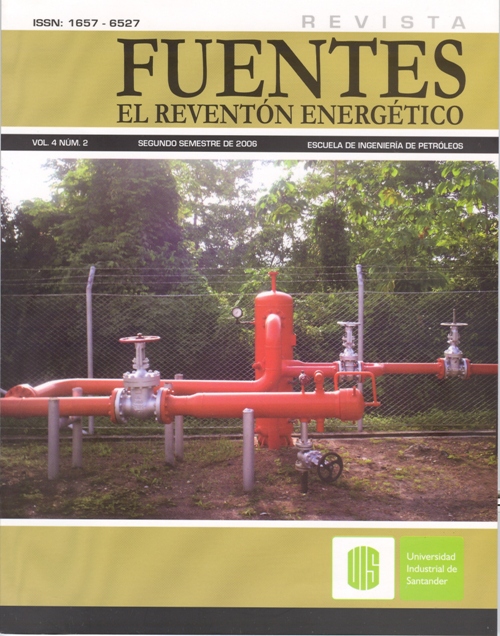Published 2006-12-28
How to Cite
Abstract
RESUMEN
Se diseñó y fabricó un dispositivo de laboratorio que simulará las condiciones de rozamiento entre el acople y el tubing, permitiendo el manejo de fluidos corrosivos y no corrosivos a condiciones de presión y temperatura del pozo. A través de las pruebas en el simulador se evaluó el desgaste ocasionado en un material tubing API J55; y en cupones maquinados de acoples convencionales, con spray metal, y materiales poliméricos usados en centralizadores. Además se evaluó el efecto de tener un ambiente no corrosivo, corrosivo con C02, la efectividad de aplicar inhibidor de corrosión y el efecto del %BSW Los resultados mostraron que la pérdida de material es más severo cuando se presentan ambas condiciones, rozamiento y corrosión que cuando se presentan en forma individual; el uso de acoples con materiales duros, protege al acople pero incrementa el desgaste en la tubería; el uso de centralizadores en materiales poliméricos protege la tubería, pero su vida útil es corta; a bajos porcentajes de %BSW la acción lubricante del crudo protege ambas superficies, lo contrario sucede a altos %BSW; el efecto protector del inhibidor de corrosión disminuye ostensiblemente debido a que la película de inhibición es afectada por el rozamiento entre los dos elementos.
Palabras clave: Acoples, centralizadores, tubing, spray metal, inhibidor, dióxido de carbono.
ABSTRACT
A laboratory rig was designed to simúlate the condifions of friction between couplings and tubing, which can allow handling corrosive and non-corrosive fluids to conditions of pressure and temperature of the oil well. The corrosion rate of materials from tubing API J55, conventional couplings, spray metal, and polymeric materials used in centralizers were evaluated. In addition, the effect of CO on solution, the corrosion inhibitor effectiveness and the effect of %BSW also were evaluated. The results showed that the loss of material is more severe when both conditions, friction and corrosion appear that when they act individually; the use of couplings with hard materials, protects to couplings but it increases the wear in the pipe; the use of centralizer in polymeric materials protects the pipe, but its service life is short; to low percentage of %BSW the lubricant action of the oil protects both surfaces, the opposite happens to high values of %BSW; the protective effect of corrosion inhibitor is decreased because the inhibition film is affected by the friction between both elements.
Keywords: Couplings, Tubing, Inhibitor, Carbon dioxide, erosion
